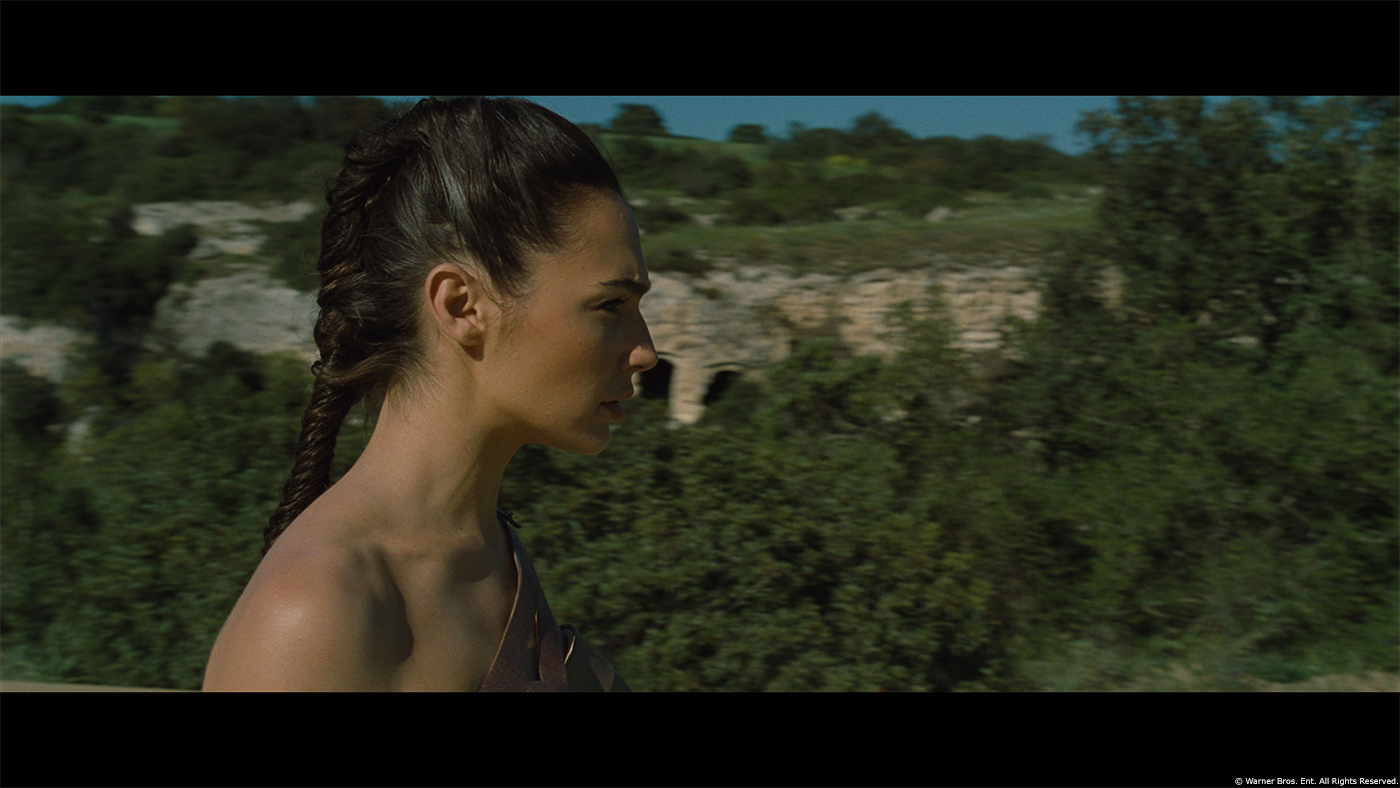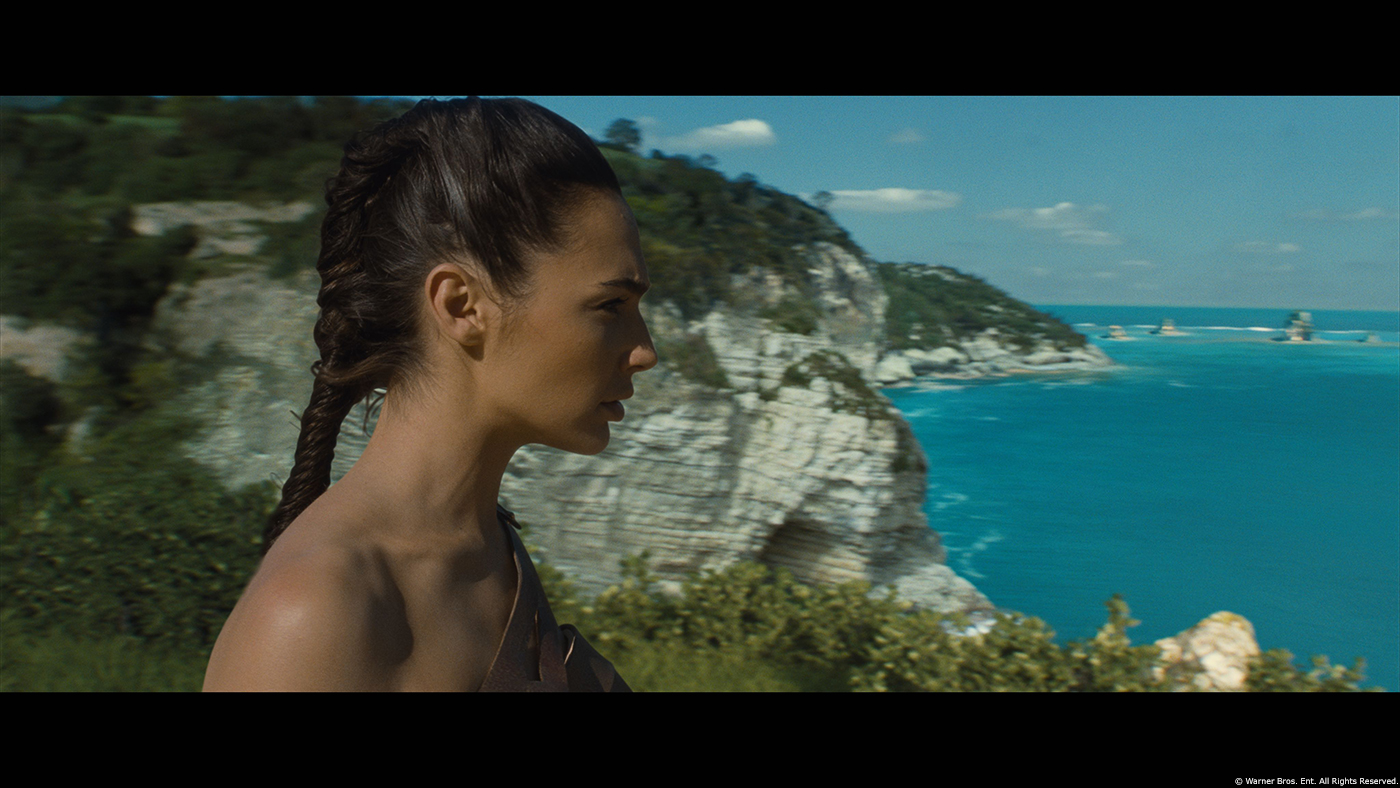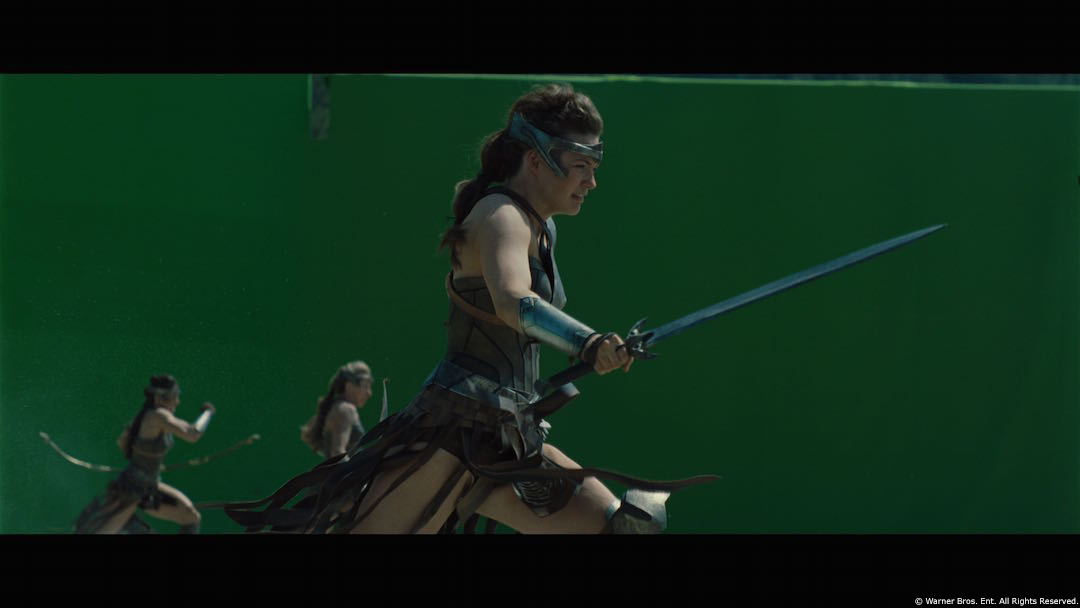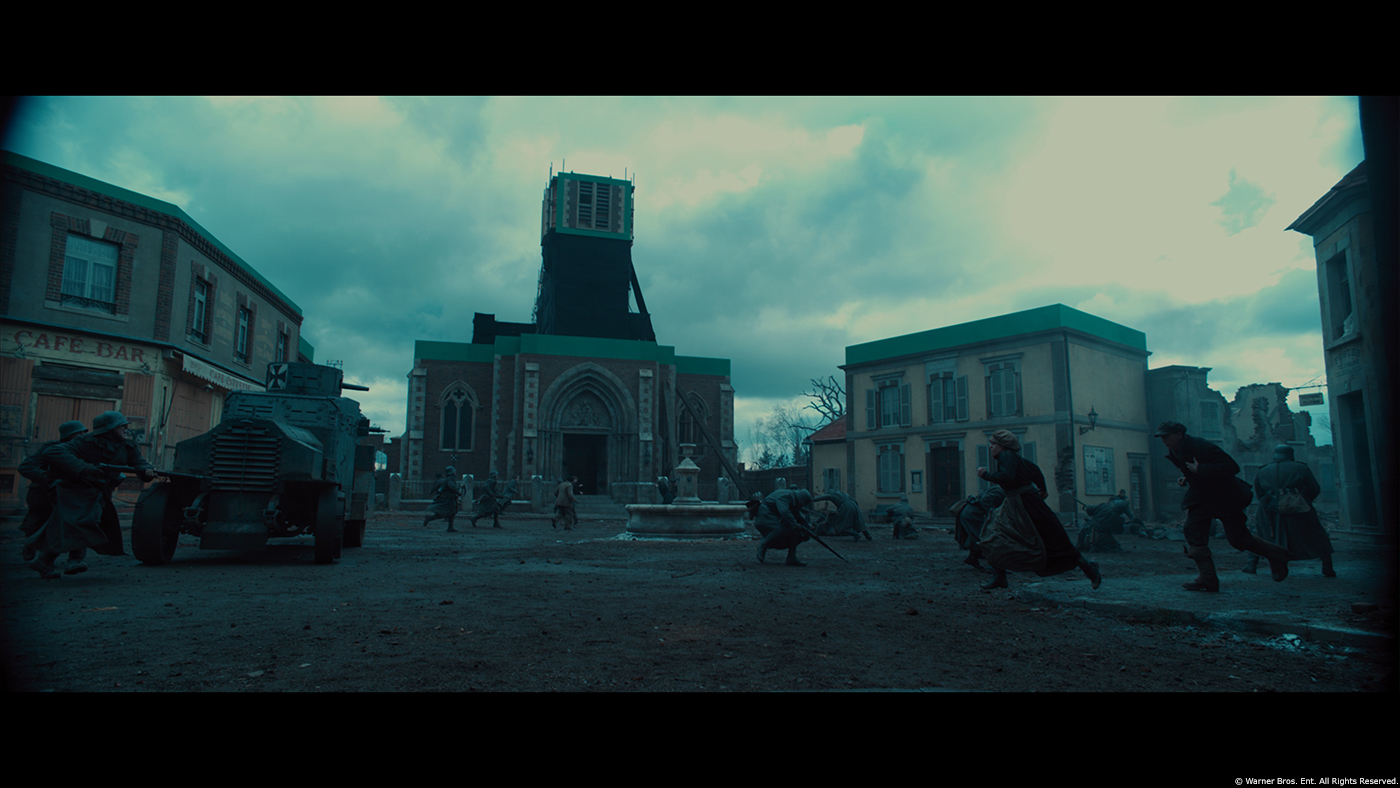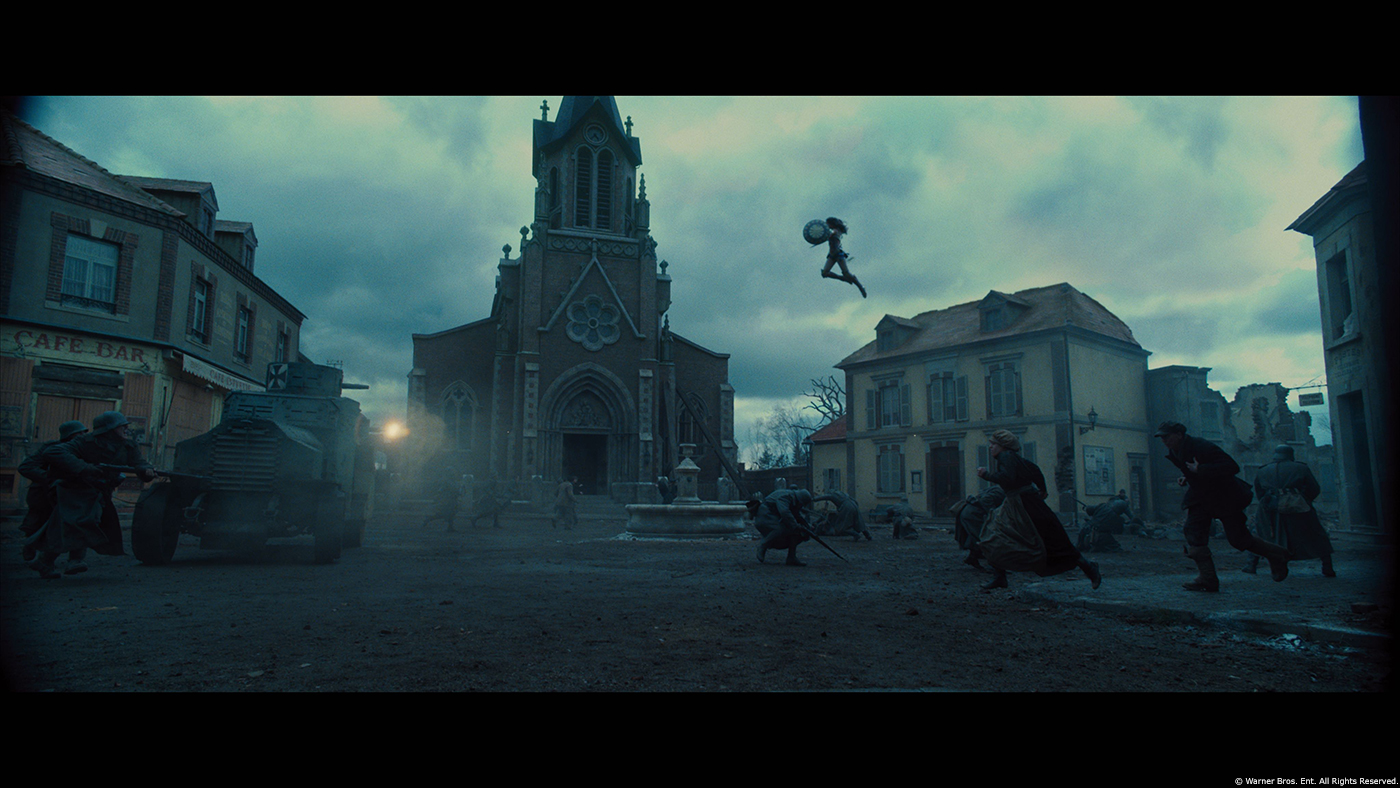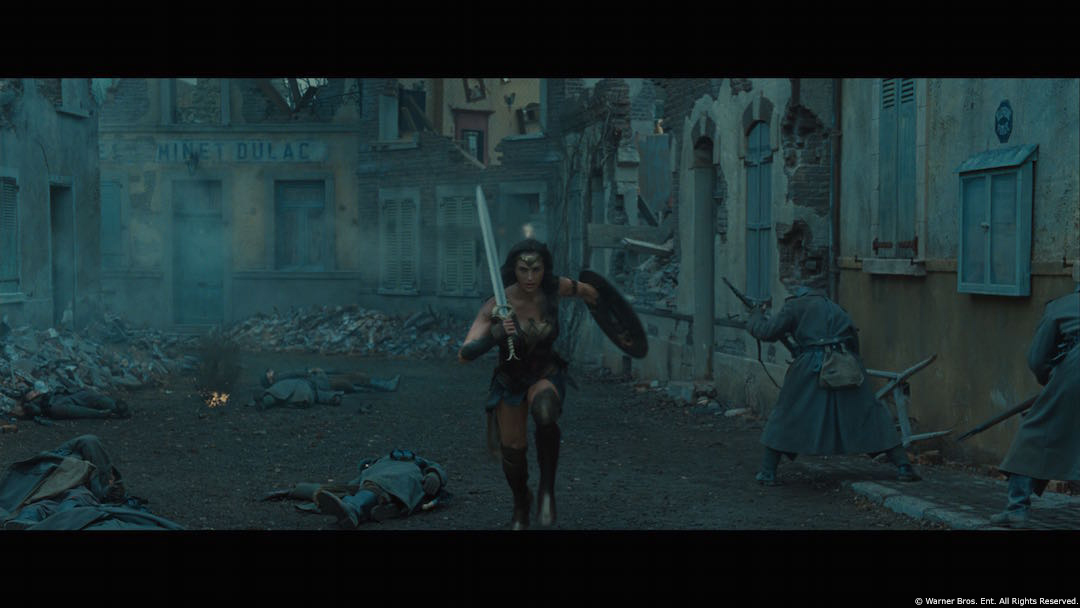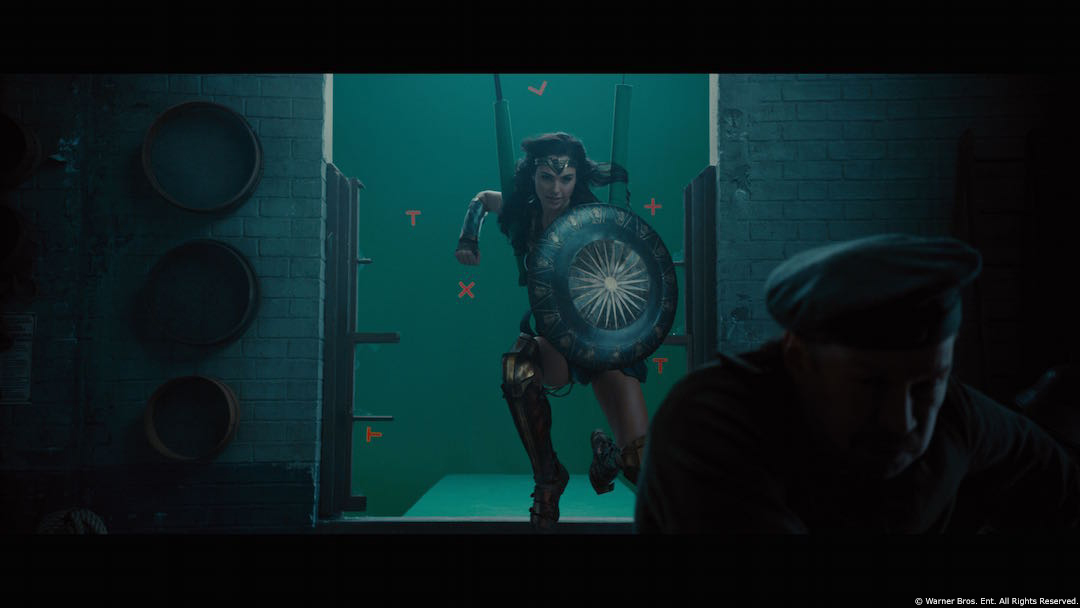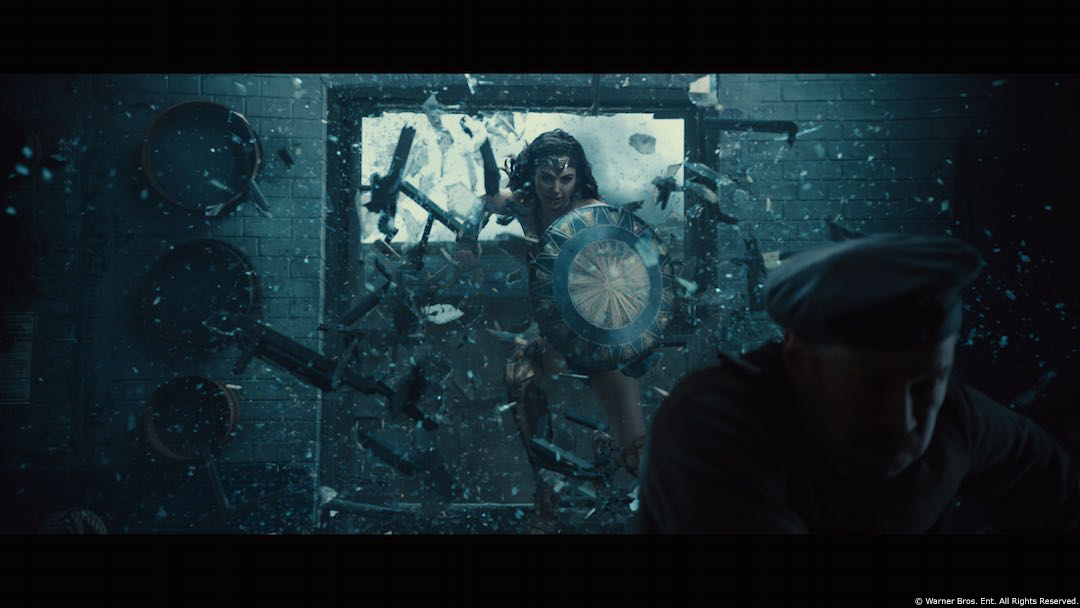In 2015, Jessica Norman explained to us about the work of MPC on EXODUS: GODS AND KINGS. She then worked on A MONSTER CALLS and today she talks about her work on WONDER WOMAN.
How did you and MPC get involved on this show?
We had some early meetings with Bill Westenhofer during pre production where we discussed the various aspects of the show. Once the work had been awarded the shoot soon started and the project began.
How was the collaboration with director Patty Jenkins and VFX Supervisors Bill Westenhofer and Frazer Churchill?
Patty Jenkins is a very passionate director and had firm ideas on how she wanted Diana to come across. Bill and Frazer are both very experienced VFX supervisors and had great input and advice for the VFX on the show.
What was their approaches and expectations about the visual effects?
In many of our shots the VFX work is meant to be invisible, supporting the drama and action. A combination of stunt, SFX and VFX were used. There was a good balance but some shots relied more on CG, like the impossible stunts where we created a digital Diana.
What are the sequences made by MPC?
No Man’s Land, Veld town and the Beach battle sequence, from the point where Steve’s planes comes crashing down towards Themyscira.
How did you organize the work at MPC?
The majority of work and shot production happened at MPC Montreal apart from the asset builds which were split between MPC London and MPC Bangalore and Matchmove, roto prep and some comp work in Bangalore.
Themyscira is a beautiful location. Can you explain in detail about its creation?
MPC created the environment for the Beach battle sequence, including the cliffs behind the beach and the reefs that surround the island. The scene was shot across two beaches on the west coast of Italy. The brief was to add cliffs to match the ones on Vignanotica beach, on the east coast of Italy. Vignanotica is far from a practical location to shoot at, which we experienced when we went there for extensive texture and reference photography. We used the sand, sea and action from the shoot, and added cliffs, reefs, additional sand and ocean extensions for the environment. Beyond the cliff on the beach we extended with mountain landscape to match other scenes in the movie.
The Amazones have a fight against the soldiers. How did you created the various digi-doubles?
All of the digital characters were built by MPC’s teams based on scans and texture photography that we captured during the shoot.
Can you tell us more about the CG crowds?
For the Beach battle scene we were able to use a lot of material from our mocap library, including horses, bows and gun action. What we didn’t have was male vs female clips, or guns hitting bows. We therefore conducted a mocap shoot in our London studio with two of the fight coordinators and two stunt actors, which we used extensively. For some shots like where the amazons jump from the cliff, we went straight to animation.
How did you enhanced the various fights?
For the Beach battle scene we extended the crowd with Amazons fighting Germans, arrows, muzzle flashes and ground impacts. We used a mixture of live actions elements combined with CG FX impacts and explosions. A handful of shots were shot on green screen back at Leavesden studios on a robo moco rig. For these shots we added hero CG horses, hero characters, crowd and environment extensions.
Can you explain in detail about the creation of the No Man’s Land and the village?
A large part of No Man’s land was created on the backlot at Leavesden studios including the trenches.
Reference photography of the set build was used to generate a combination of DMPs, 2.5D projections and CG assets like burnt trees and props that we used for our set extensions. In the distance we added tree lines and a CG church tower.
Large parts of Veld town were built at Leavesden. For this scene we crafted CG top ups rather than DMP as there were a lot of shots with different lighting conditions. The background extensions were DMP with trees and distant buildings. The street scene was shot at a different location, Luton Hoo, which is just north of London. We captured various reference materials from the location including roof top textures and also used material from our reference library to extend the various street and roof top views.
There is a beautiful sequence when Diana goes into the No Man’s Land. Can you tell us more about it?
For most of the shots in the scene we did sky replacements using a sky that was picked for an early trailer shot. It really helped to create the drama and backdrop to the scene. The first few shots when Diana emerges from the Trenches were shot on green screen with added CG environment extensions. As more intense firing hits Diana throughout the sequence we added animated and lit tracer fire and interactive light. Gal Gadot was holding a SFX rigged shield with added shakes and sparks to aid her performance. The shield was painted over with a CG shield and a lot of CG and live action elements were added throughout the scene. Comp Supervisor Etienne Daigle and his team did a great job working on these very comp heavy shots. CG Allied soldier crowd extensions were used in a few shots and we used our digital double Diana for when she jumps in and out of the trenches and start running towards Veld.
How did you created the digi-double for Diana?
To create our digital doubles we used scans, texture photography and photogrammetry. We also gathered various face, cloth and motion reference material. MPC’s team built two different costumes and two different hairstyles.
New controls were developed for our hair simulation tools so we could have more control where we wanted to maintain some of the original hair design rather than just rely on the simulation. A fully dynamic muscle system was implemented to our digital Diana which added the final elements of realism, particularly to the legs, arms and shoulders as she runs, jumps and fights her way past the Germans in the Veld town sequence.
In the village, Diana is fighting german soldiers in many slow-mo shots. Can you explain in detail about these shots?
In one of the shots we see Diana fight off numerous Germans with her lasso. Four plates were shot on the Veld town set, that we then stitched together, while the second and third plates ended up being CG backgrounds to allow for camera corrections. In this shot Diana and the Germans are full CG. Plates with a stunt double doing as many of the moves as possible were captured on set and later on a green screen stage, however we mainly used these as reference as they were hard to incorporate into the stitched background. The FX team placed sand and small rocks across the floor that the CG characters interact with.
For other shots in the sequence we did face replacements and added a CG lasso, sparks, impact enhancements and environment extensions. A full CG Diana was used for the powerful run and jump shots.
How did you handle the slow-mo aspect of these shots?
Our first step was to apply the retime and send it back for approval. Sometimes we would suggest changes to the retimes based on animation timings and conversations with the production’s editorial team.
Can you tell us more about the creation of the Lasso of Truth?
The Lasso is practical when it’s not in use, sitting at Diana’s hip. For the fast moving lasso fight shots, the stunt double held a small piece of rope that we painted out and replaced with our CG lasso. For the more static shots, a glowing prop lasso was used that would give us the interactive light. The lasso itself was quite thin, and quickly lost detail in motion. We therefor worked on adding some extra variation that could be controlled throughout the shots.
Can you explain in detail about the shot where we follow Diana inside the building and then in the air kicking a german soldier?
This sequence of shots uses a mix of different techniques. It was great to work with the second unit director and stunt coordinator, Damon Caro who has a great understanding of what can be done both in camera with stunt performers and also in VFX.
Stunt shots with face replacements were intercut with close ups of Gal Gadot. The shot where Diana crashes through the window was shot with Gal Gadot on wires on a green screen. At the start of the shot she is fully CG to allow for extra movement outside the window. The window destruction was largely FX, with some enhancement from live action elements.
Many FX happens during your sequences. Can you tell us more about it?
MPC created a range of different FX work for the Veld town sequence. This included explosion enhancements when the CG tank hits a building, various ground impacts and a lot of dust. The two biggest events were the bridge explosion and the church destruction.
MPC CG Supervisor James Rustad worked closely with our FX team to come up with the best solution for each setup. For the church destruction we used Houdini and rigid bodies which allowed us to control the timing and performance according to the filmmaker’s notes. The impact and destruction happens across 3 shots. The Bridge destruction was a quicker and a more explosive event and as the bridge was made mostly of wood, MPC’s proprietary tool Kali was the better choice for this effect.
Kali was also used to break the wooden pillars in the fight room sequences and to shatter both windows when Diana enters and leaves. Kali has easy retiming capabilities, both in simulation and post simulation, which was useful as all of these shots had slow motion speed ramps applied.
What was the main challenge on this show and how did you achieve it?
The biggest challenge on WONDER WOMAN was Diana in different ways. The two main stunt doubles had slightly different facial features and body proportions to Gal Gadot, making the roto animation complicated. In many shots we had to replace more than just the face.
Animation was a big part of the puzzle. Animation supervisor Omar Morsey, together with his team, put a lot of passion and effort into creating believable superhero movement for Diana. We studied Gal Gadot’s movements and the various stunt performers as well as range of top athletes. We utilized our mocap studio in Montreal extensively and captured a range of strong female performers actin out as much of the actions as possible. We bought a new treadmill that allowed us to capture very fast running cycles. After that a lot of energy went into animating Diana to make her feel superhuman but believable. The asset build of Diana, look development and lighting also played a big part.
What is your best memory on this show?
The teamwork.
How long have you worked on this show?
Roughly 1.5 years
What is your VFX shots count?
399 including omits.
What was the size of your team?
Around 370 artists were involved at some stage of the show
A big thanks for your time.
// WANT TO KNOW MORE?
MPC: Dedicated page about WONDER WOMAN on MPC website.
© Vincent Frei – The Art of VFX – 2017


